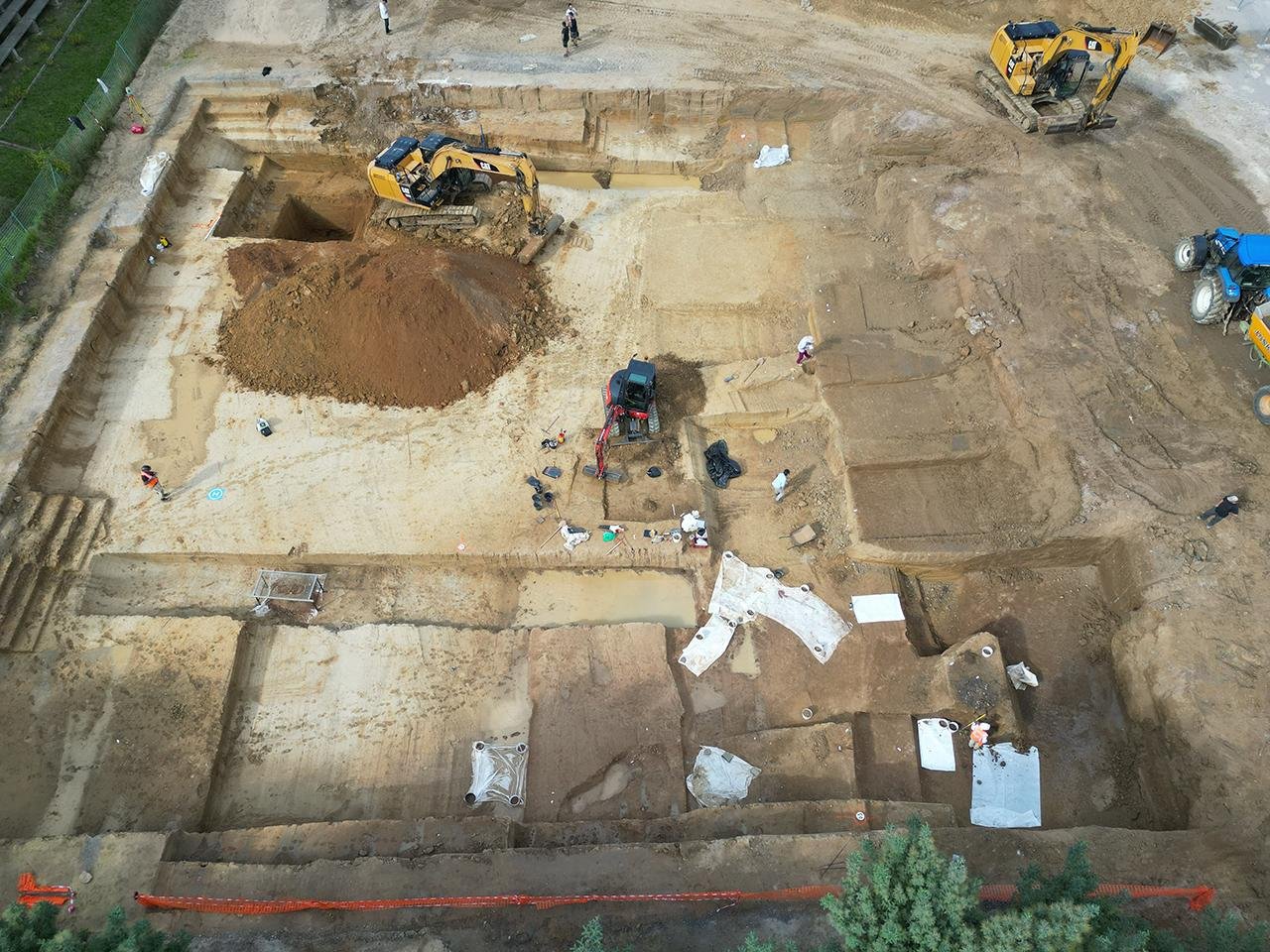A rare archaeological discovery reveals one of France’s very first Neolithic settlements, attributed to the Early Cardial period. On France’s Riviera, excavations conducted by the National Institute for Preventive Archaeological Research, Inrap, are currently in progress at Cavalaire-sur-Mer. In advance of an urban renewal program for the city center, the State has requested this massive preventive excavation, covering a 4,200-square-meter zone, which began in May and is expected to continue until late January.
 General view of the site at the start of the excavation. Credit: Sylvain Barbier, Inrap
General view of the site at the start of the excavation. Credit: Sylvain Barbier, Inrap
The Neolithic period along the Mediterranean coastline represents a transformative chapter in human history: transitioning from a nomadic lifestyle to a sedentary one, characterized by agriculture and livestock farming. Just as its name suggests, in the Early Cardial period—around 5800 BCE—the period is characterized by pottery decorated with impressions made using the serrated edges of Cardial shells. This ‘cultural current,’ believed to have originated in Anatolia, spread rapidly across the coasts of Greece, southern Italy, and eventually into southern France.
The importance of the settlement at Cavalaire-sur-Mer is that it is the second known site of this period in France. Similarities to earlier finds in Greece, Slovenia, and central Italy confirm that the original impetus for this cultural diffusion came from the east and that it played a very significant part in the introduction of agro-pastoral economies into Europe.
Beneath a four-meter layer of alluvial deposits in a small coastal valley, archaeologists found a building that dated from the Early Cardial period. Its position, 1.3 meters beneath Middle Neolithic occupation layers dated to ca. 4800 BCE, confirmed its age. The building had two parallel stone walls and a small apse, now badly eroded. The area measured approximately 7 by 5 meters, and the walls were reinforced with a mixture of raw earth and gravel, resulting in dense diagnostic sediment.
 Detail of the excavations. Credit: Sylvain Barbier, Inrap
Detail of the excavations. Credit: Sylvain Barbier, Inrap
The ceramic fragments found embedded in its walls display the hallmark decorative motifs of the Cardial period, further confirming its age and cultural affiliation. The plan of the building resembled Neolithic buildings previously discovered in central Italy and consolidates the hypothesis of a common cultural origin of the areas.
The site also revealed isolated hearths and a concentration of fire-related structures spanning a four-square-meter area, potentially enclosed by postholes. These findings suggest the settlement was both functionally diverse and highly organized, offering insight into the lives of some of France’s earliest farmers.
Scattered hearths, and one clustering of fire-relevant features over a four-square-meter space that may have been enclosed by postholes, suggest that the settlement was functionally diverse and highly organized.
Understanding Cardial buildings in France is constrained by the extreme rarity of well-preserved remains, particularly from open-air settlements. The architecture of these societies was essentially perishable, and hence discoveries like Cavalaire are extremely rare. Earlier findings, however, including the Peiro Signado site in Languedoc dated to 5800 BCE and that of Courthézon in Vaucluse, have provided partial insights into habitation patterns but are limited in scope.
More information: Inrap